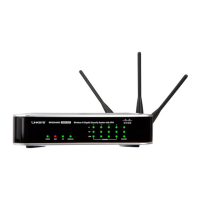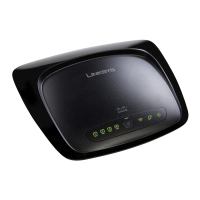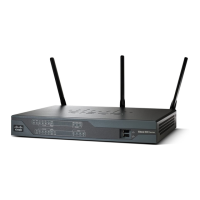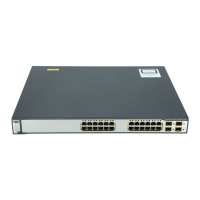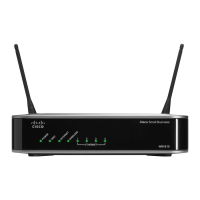
Do you have a question about the Cisco WRV210 - Wireless-G VPN Router and is the answer not in the manual?
| Brand | Cisco |
|---|---|
| Model | WRV210 - Wireless-G VPN Router |
| Category | Wireless Router |
| Language | English |
Provides an overview of the WRV210 router, its features, and physical components.
Guides users through the initial setup process, including hardware connections and basic network configuration.
Explains how to access and navigate the router's web-based configuration utility and manage settings.
Details essential network configurations including language, internet connection, local network, and time settings.
Explains how to create virtual LANs (VLANs) for network segmentation and traffic management.
Describes how to use Dynamic Domain Name System (DDNS) services to map domain names to dynamic IP addresses.
Explains the process of cloning a MAC address for your Internet connection, useful for ISP registration.
Details how to configure dynamic and static routing protocols for network traffic management.
Discusses the importance of wireless security and potential vulnerabilities.
Provides practical tips to enhance wireless network security, including changing default credentials.
Outlines general security precautions for the entire network, beyond just wireless.
Guides users on configuring wireless network parameters like SSID, mode, channel, and schedules.
Details the configuration of wireless security modes, encryption types, and authentication methods.
Explains how to control access to the wireless network using MAC address filtering policies.
Covers advanced wireless settings such as AP Isolation, transmission rates, and power levels.
Describes how to configure WDS to extend wireless network coverage using repeaters.
Explains how to configure firewall settings to prevent various network attacks and unauthorized access.
Details how to enable port forwarding to allow external access to internal network resources or services.
Describes the use of port triggering to manage access for applications that use dynamic ports.
Guides users on configuring a Demilitarized Zone (DMZ) to expose a specific PC to the Internet while protecting the rest of the network.
Explains how to restrict user internet access based on specific days and times.
Details how to block access to specific websites using URL filtering policies.
Covers the management of VPN users and the generation/import/export of security certificates.
Explains how to enable or disable VPN passthrough for IPSec, L2TP, and PPTP protocols.
Details the configuration of IPSec VPN tunnels for secure site-to-site connectivity.
Describes how to review and monitor the status of configured IPSec VPN tunnels.
Explains how to configure QoS for specific applications using priority queuing or bandwidth allocation.
Details how to configure QoS based on specific LAN ports to prioritize network traffic.
Covers essential administrative tasks like password management, access control, SNMP, UPnP, and configuration backup/restore.
Explains how to configure system logs and email alerts for specified network events.
Guides users on performing network diagnostic tests like Ping and Traceroute to troubleshoot connectivity issues.
Details the process of restoring the router to its original factory default configuration settings.
Provides instructions on how to download and install new firmware for the router.
Explains how to restart the router to apply changes or resolve minor issues without losing settings.
Displays information about the router's hardware, software version, current time, and MAC address.
Provides details on the local network status, including IP addresses, subnet masks, and DHCP server information.
Shows the status of the wireless network, including mode, channel, SSID, and security settings.
Displays network traffic statistics for Internet, wireless, and wired connections.
Shows the status of connected QuickVPN clients, including username, connection time, and duration.

